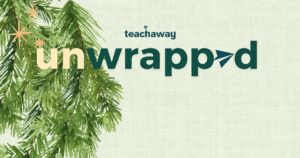There are lots of ways to go about looking for that dream teaching job abroad – from applying for vacancies online to attending a teacher job fair.
Whether you’re a newly-qualified teacher or a seasoned educator, a teacher job fair can do wonders for your job search – they’re a great way to gain exposure to a wide range of hiring schools all around the world and make personal connections with school heads.
With so many of our awesome teachers bound for the Atlanta, Bangkok and New York job fairs over the next few months, we thought we’d quickly cover some of the main things you can do to prepare for the fairs and (hopefully) avoid any last-minute panic.
To make the best impression possible and maximise your chance of landing a job from all the great opportunities on offer at the job fair, all Teach Away fair attendees should set aside time to take the following steps:
Do your homework
Step 1: Pinpoint some of the regions where you’d most like to teach in. Find out as much as you can on what it’s like to live and teach in each country in that particular region – everything from the typical salary and benefits packages and the travel opportunities it offers to the standard and cost of living.
Step 2: Check out the different schools attending on the Teach Away fairs page and jot down a quick list of those that interest you most. It’s worth broadening your focus to schools in locations you might not have previously considered. Don’t be quick to overlook a great school if it appears to be in a region you’re not as interested in on first glance. As the saying goes, don’t judge a book by its cover!
While schools will be holding presentations at the fair, it’s still a good idea to research the hiring schools in advance, either on Teach Away or their school websites, to find out more about their history, mission, values and strategic goals. Take notes on the hiring schools you plan to target during the interview sign-up period, and bring your notes with you to review and refresh your memory on day one of the fair.
That said, when do you arrive at the fair and see the full listing of vacancies on day one, you’ll greatly improve your chances of getting a job offer by focusing on the vacancies that most closely match your experience and subject expertise – rather than the school or country you’re most interested in.
Get organized
Not being prepared for the fair is a surefire recipe for failure. Ensure that your resume is scannable and easy to follow. Print off multiple copies to take with you (we recommend 20-30 copies) and bring a notepad and a pen to take notes throughout the fair. As you’re preparing, you should research some calming techniques to steady those nerves.
And before you head to the fair, don’t forget to take Teach Away’s Culturally Responsive Teaching course. This 90-minute online course will not only teach you what you need to know in order to to better support students from a broad range of cultural backgrounds. It will also help you formulate more considered, insightful responses during your interviews, which will in turn help you market yourself as a culturally competent educator to potential hiring schools.
Dress for success (and comfort!)
Plan to bring appropriate interview attire – leave the t-shirt and sweatpants at home! It’s best to follow a more conservative business or business casual, dress code, such as a suit jacket with pants or a skirt.
You may already have some professional clothing you can recycle for the fair. If not, consider either borrowing some interview appropriate clothing from a friend or colleague (or taking the opportunity for some retail therapy, which can be a great stress-relieving activity!)
Some other pro tips for you when figuring what to wear to the fair include the following:
-
Opt for lightweight clothing that won’t make you overheated and avoid fabrics that have a tendency to wrinkle.
-
Steer clear of pants or skirts that are uncomfortable to sit for long periods of time.
-
Darker fabrics can be a lifesaver (if you’re unlucky enough to spill something).
-
Make sure your footwear is comfortable – you’ll probably be on your feet for several hours at a time!
Nail your “elevator pitch”
During the interview sign-up period (often jokingly referred to as speed dating for teachers), you’ll get a chance to meet with prospective employers and promote yourself, your strengths and your teaching experience to each of them for a few minutes at a time.
Each fair attendee will have a finite amount of time to shine, so it’s well worth preparing a memorable, yet succinct, 60-second pitch about yourself. Your pitch should clearly state the skills and accomplishments you could bring to benefit this school as well as what makes you truly unique as an educator.
You can even record your pitch on your phone. Play it back a few times and really listen to what you’re saying to ensure you’re sending the right message to hiring schools. The intention shouldn’t be to memorize your pitch word for word and risk sounding overly rehearsed or robotic. Instead, you want to be confident that you’ve covered the high-level points you want to drive home to prospective employers.
As you’re fine-tuning your pitch, it’s also a good idea to go over it with an objective person (perhaps a former teaching colleague) for some constructive, honest feedback. Take this opportunity to practise how to greet and shake hands with interviewers, too!
Get your portfolio ready
Bring a well-organized, current teaching portfolio (preferably digital/online) with you to each interview. Your portfolio is an invaluable tool that you can use to your advantage during the interview to back up what you’re telling hiring schools about your teaching philosophy and style, as well as your classroom skills, experience and achievements to date.
Familiarize yourself with each section so when you are in an interview and asked a question, you can quickly show them a tangible example to support your answers.
We hope you found these fair preparation tips helpful! Anything we missed? Let us know in the comments below. We look forward to seeing you at the fairs soon!



